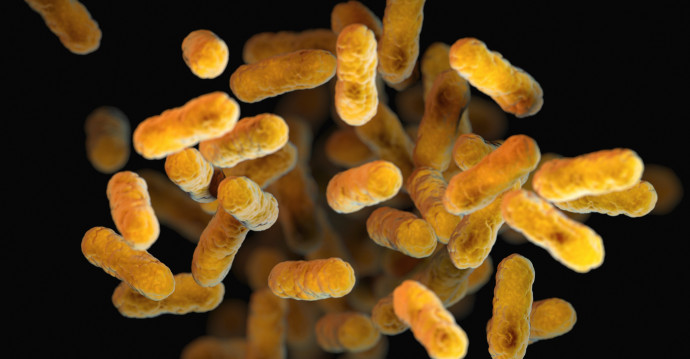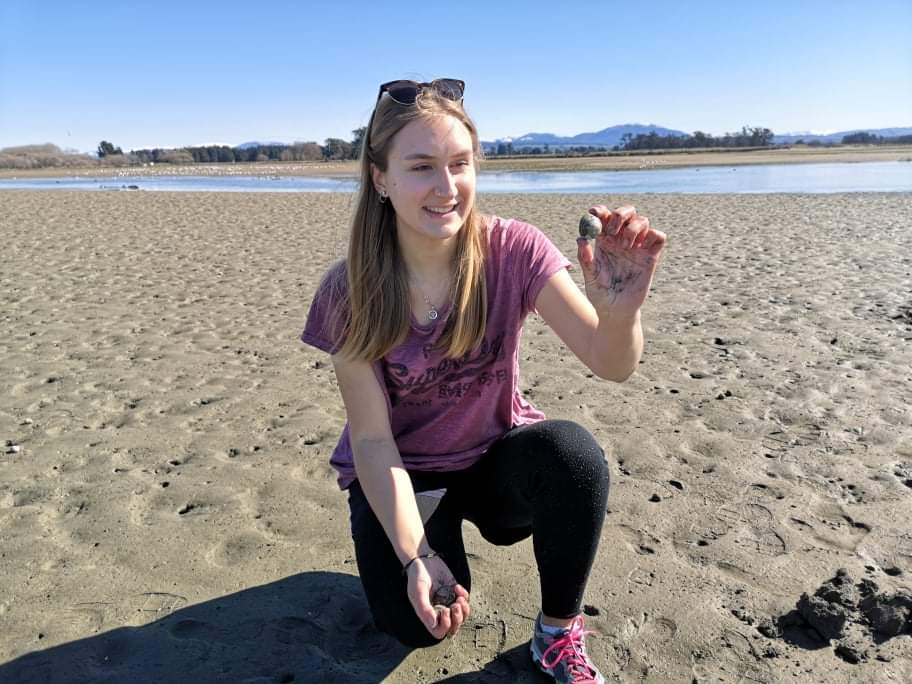News
Published 16 November 2023Links between AMR, waterways and use of antibiotics and other chemicals in Aotearoa

This World AMR Awareness Week, Royal Society Te Apārangi spoke with experts Professor Jack Heinemann and Dr Sophie van Hamelsveld about antimicrobial resistance (AMR), and what work is being done in Aotearoa New Zealand to understand it better.
Microbes that commonly cause infectious disease in humans and animals are becoming resistant to the antimicrobial medicines used to treat these diseases.
Antimicrobial resistance has become a critical global health threat and was associated with five million deaths in 2019.
Estimates suggest that without urgent action infections due to antimicrobial-resistant microbes could kill 10 million people globally per year by 2050.
Use and misuse of antimicrobial medicines, as well as international travel and trade, could accelerate the spread of resistance, increasing morbidity and mortality amongst our community in Aotearoa.
Professor Jack Heinemann, University of Canterbury, was an expert for Royal Society Te Apārangi's 2017 expert advice paper on antimicrobial resistance. When asked what has changed in the past five years, Jack responded with “I guess it would still be all doom and gloom, very little has changed”.
He added that there have been efforts to become more in control of superfluous prescriptions but “the little we have done is way too little to solve the problem”.
Jack says that there is an increasing need for more environmental monitoring of antimicrobial resistant microbes in our environment.
Faecal indicator bacteria, like E. coli and Enterococci, gets washed into our waterways from farms (originating from livestock effluent), and from wastewater in urban areas. These bacteria can cause infections in people, which have traditionally been treated using antibiotics.

Currently, there is no wide-scale programme for monitoring AMR faecal indicator bacteria, but they can be lethal.
“In the Avon River, we routinely find E. coli that are resistant to a last-resort drug, ciprofloxacin, and they're resistant to 32 times the concentration (of the medication) that can be safely administered to a human being,” Jack says.
What does that mean? If you came into contact with the water or consumed it, and then developed an infection, you would have a significantly higher risk of death.
“These are infections that kill millions of people globally, every year. The reason they don't kill as many people in New Zealand is because of antibiotics,” says Jack.
But those antibiotics are on the brink of no longer working at all.
According to Jack, Aotearoa, along with the rest of the world, is about to enter an era where thousands more people die each year with untreatable bacterial infections.
“Already, globally, there are millions of excess deaths due to antimicrobial resistance on top of the deaths we expect from the infection itself.”
When deciding how to combat this problem in Aotearoa, Jack says it would be irresponsible to aim for absolutely no AMR by not using antibiotics, because we still want to be able to use antimicrobial agents on sick people and animals.
“A ban on use will mean that rich people would still access them. And those who have less access to health insurance or other means would suffer more.”
AMR isn’t just a problem for humans, but animals too – so the “first drug off the shelf” needs to work, but already it’s the fourth or fifth that might solve the infection, Jack says.
“Where we’re getting to now, is that the first drug off the shelf is the last drug that we have.”

What does AMR look like in our aquatic environments?
Dr Sophie van Hamelsveld was supervised by Jack during her PhD; she’s now working as a Postdoctoral Research Fellow at The Institute of Environmental Science and Research (ESR).
In her PhD research, Sophie looked at antimicrobial resistance in the environment of Aotearoa New Zealand, specifically in the surface water – rivers, streams and coastal areas, and in aquatic foods that come from those areas.
“I focused on cockles, mussels, and watercress. Those are important foods for a lot of people, but especially Māori, because they're mahinga kai, traditional food of Māori.
“Mahinga kai is not just the practice itself but also the place where the food is grown and extracted from,” Sophie explains.
She said people are being exposed to potential infections from anti-microbial resistant bacteria not only through kai, but through recreational use of water, irrigation, flooding, and even from touching your dog after it’s been for a swim.

Sophie says that she has been finding high levels of antimicrobial resistant bacteria in urban waterways – “that might indicate that the urban humans and animals around that river could be carrying some of these resistant bacteria”.
Sophie says for her PhD she was trying to figure out whether we could, first of all, predict how many resistant E. coli would be in a waterway based on the total number of E. coli.
“E. coli could be resistant or not resistant and we’d count all of them and then try to figure out if we could use that number to predict how many would be resistant to certain antibiotics, especially if we used commonly prescribed ones, that you'd be getting from a GP.”
She said she was interested in whether it was possible to use one kind of antibiotic to predict whether bacteria would be resistant to others.
“What we've found is that certain resistance phenotypes (traits) were quite common, and others were quite rare, but the rare ones tended to be E. coli that were a strain we would be more concerned about – the strains that definitely are causing infections in humans and are associated with treatment-resistant urinary tract infections.”
She says it’s possible to use the number of E. coli that were resistant to ampicillin (an antibiotic from the penicillin family) to then predict how many would be resistant to other antibiotics, such as Ciprofloxacin.
Sophie says this research has shown that there isn’t a need to monitor the whole environment for AMR if we instead look for a few key variables.
With this, Sophie hopes that key urban rivers and streams are targeted for monitoring, as well as popular recreational areas.
When asked if she thinks it’s possible to reduce AMR infections from our waterways, she says the solution comes with good stewardship.
“For example, in urban Christchurch, I think a lot of the resistant bacteria that I found are potentially coming from sewage.”
One potential source of these resistant bacteria could be cracked sewage pipes that haven’t been fixed following the Canterbury earthquakes – “that could potentially be a source for some of those resistant bacteria that I've found”, Sophie says.
When it comes to rural areas, Sophie says proper fencing to keep animals out of the water and good waste management systems are a good place to start – but the issue is complicated.
While containing farm animals could help, there is no similar solution for wildlife, like birds, that can carry AMR bacteria.

What can be done to combat AMR in Aotearoa?
Sophie says it can be hard for the average person to try to change their behaviours to reduce AMR, because a lot of it is out of their control, so solving the problem sits mostly with governments.
New Zealand has relatively low use of antibiotics for animals, but a much higher than average use in humans.
“A lot of people expect to get antibiotics when they visit the doctor, but you should really be saying to your doctor ‘maybe don't give me antibiotics unless you think that’s what I really need for my ailment that I've got right now’.”
Sophie says it can be difficult to control AMR in Aotearoa because so many of new resistant strains found in our country appear to come from overseas.
“When we're traveling, we get exposed to different things. We bring it back into the country and that's how we get these new strains of resistant bacteria that cause problems.
“We can be aware of antibiotic use, and we can try our best to reduce it – but it's really a systemic issue. Anti-microbial resistance is a global issue that's going to require a lot of countries to cooperate and commit to reducing antibiotic use to have any effect.”
However, Jack and Sophie have been researching the effects of different chemicals that aren’t antibiotics as a cause of antibiotic resistance.
“A big theme of Jack's work over the past few years, and increasingly my work as well, has been to do with our use of non-antibiotic chemicals and for example, herbicides, pesticides, and antiseptic chemicals and even some medicines like painkillers and things like that,” Sophie says.
“These chemicals aren't generally used with the intention of killing bacteria - a herbicide is used to kill plants, for example – but a lot of these chemicals are slightly toxic to bacteria, and when bacteria encounter a chemical with toxicity, it makes them stressed. When bacteria become stressed, they can often switch on genetic mechanisms or change their behaviour in ways that make them less susceptible to antibiotics.”
Sophie says chemicals and medicines that people have been using in massive volumes include ibuprofen, Panadol, Voltaren, and herbicides like Roundup.
“Even though we might do our best to reduce our antibiotic use down to the bare minimum, if we're not thinking about perhaps some of these other chemical usages, then we might not actually be able to fully tackle antimicrobial resistance.”
There have also been some unnecessary additives to household products like soap – which is already antimicrobial without added chemicals.
“Avoiding products that have chemicals like triclosan is a good step, but it’s quite hard because manufacturers often sneak them in.”
Sophie acknowledges that it can be hard for some people, particularly those that live with chronic pain, to avoid painkillers.
She suggests that people be mindful of overuse of these products where they can.
Sophie says the impact of reducing use of these chemicals might not be seen in the short term, but it could be a key to winning the fight against AMR in the long-term.
